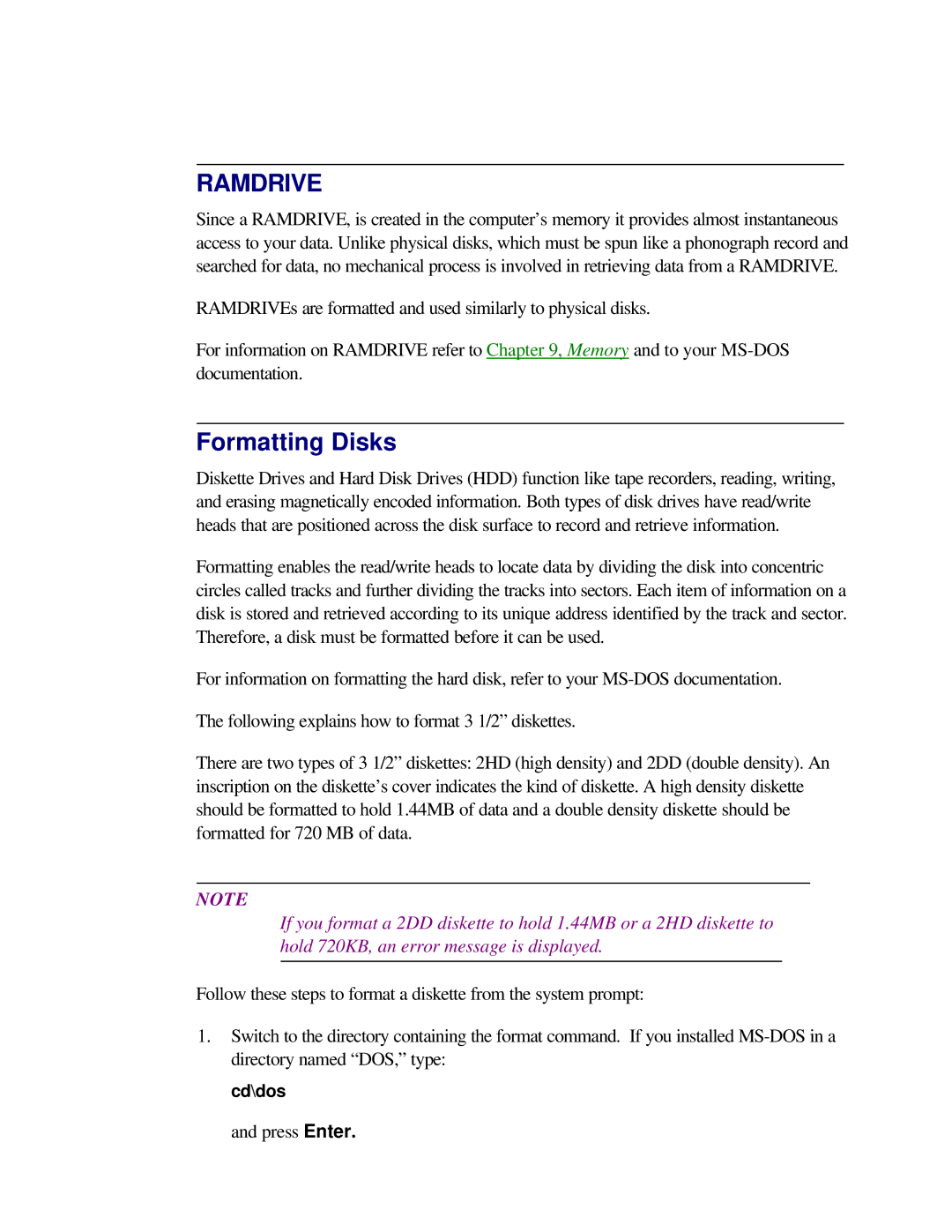
RAMDRIVE
Since a RAMDRIVE, is created in the computer’s memory it provides almost instantaneous access to your data. Unlike physical disks, which must be spun like a phonograph record and searched for data, no mechanical process is involved in retrieving data from a RAMDRIVE.
RAMDRIVEs are formatted and used similarly to physical disks.
For information on RAMDRIVE refer to Chapter 9, Memory and to your
Formatting Disks
Diskette Drives and Hard Disk Drives (HDD) function like tape recorders, reading, writing, and erasing magnetically encoded information. Both types of disk drives have read/write heads that are positioned across the disk surface to record and retrieve information.
Formatting enables the read/write heads to locate data by dividing the disk into concentric circles called tracks and further dividing the tracks into sectors. Each item of information on a disk is stored and retrieved according to its unique address identified by the track and sector. Therefore, a disk must be formatted before it can be used.
For information on formatting the hard disk, refer to your
The following explains how to format 3 1/2” diskettes.
There are two types of 3 1/2” diskettes: 2HD (high density) and 2DD (double density). An inscription on the diskette’s cover indicates the kind of diskette. A high density diskette should be formatted to hold 1.44MB of data and a double density diskette should be formatted for 720 MB of data.
NOTE
If you format a 2DD diskette to hold 1.44MB or a 2HD diskette to hold 720KB, an error message is displayed.
Follow these steps to format a diskette from the system prompt:
1.Switch to the directory containing the format command. If you installed
cd\dos
and press Enter.
